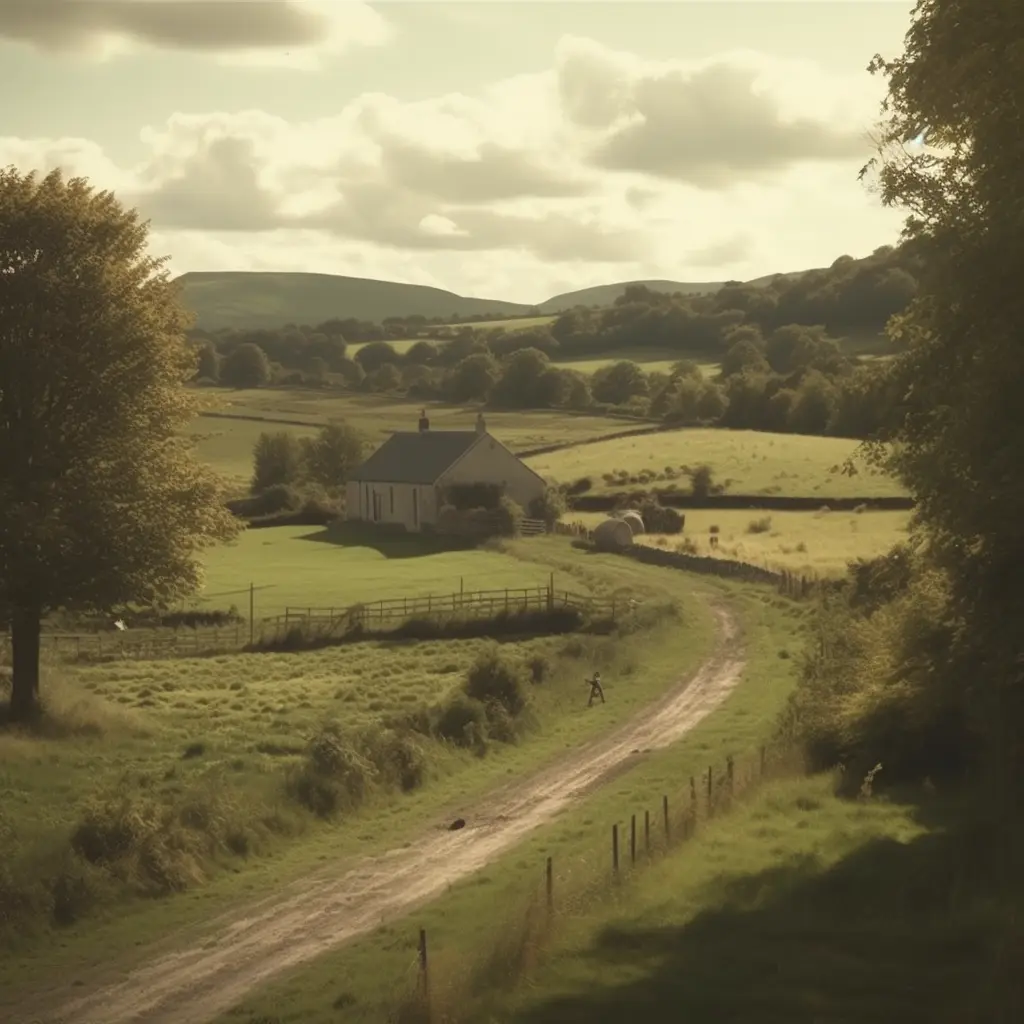Irish culture and traditions are rooted in a blend of ancient Celtic customs, Catholic influence, and uniquely Irish charms. These traditions are integral to the Emerald Isle’s identity and have resonated with people worldwide.
Events like the heart-stirring festivals of Samhain and Bealtaine, where the thin veil between this world and the next is celebrated, and charming local events like Puck Fair and Lisdoonvarna Matchmaking Festival, are uniquely Irish, as are the irresistible lure of traditional Irish music and dance, and the gripping narrative of Irish literature and storytelling.
Whether you’re planning a visit to vibrant Dublin or seeking solace in Ireland’s countryside, this guide is your passport to understanding and experiencing the heart and soul of Ireland. So, let’s embark on this incredible journey together and explore Irish culture and traditions.
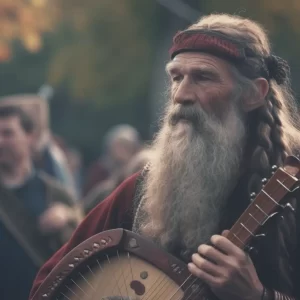
Festivals and Celebrations
Ireland is a country rich in culture and heritage, and this is reflected in the many festivals and celebrations that take place throughout the year. From ancient pagan traditions to modern-day events, there is something for everyone to enjoy.
Samhain
Samhain, which takes place on October 31st, is an ancient Celtic festival that marks the end of the harvest season and the beginning of winter.
This festival is also known as Halloween and is celebrated around the world and shows the spread of Irish traditions beyond Ireland. In Ireland, people traditionally light bonfires and carve turnips to ward off evil spirits.
Imbolc
Imbolc, which takes place on February 1st, marks the beginning of spring. This festival is also known as St. Brigid’s Day and is celebrated by lighting candles and making crosses out of rushes. It is a time to celebrate new beginnings and the return of the sun.
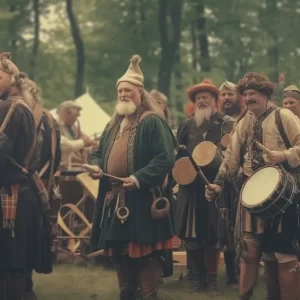
Lughnasadh
Lughnasadh, which takes place on August 1st, is a celebration of the harvest. It is named after the god Lugh, who was associated with the sun and the harvest. This festival is marked by feasting, dancing, and games.
Bealtaine
Bealtaine, which takes place on May 1st, marks the beginning of summer. It is a time to celebrate fertility and growth and is associated with the goddess Brigid. This festival is marked by bonfires, dancing, and the crowning of a May Queen.
Puck Fair
The Puck Fair, which takes place in Killorglin, County Kerry, is one of Ireland’s oldest fairs. It is held every year in August and is a celebration of the harvest. The highlight of the festival is the crowning of a wild goat as King Puck, who is then paraded through the town.

Lisdoonvarna Matchmaking Festival
One of the funnest Irish traditions is the Lisdoonvarna Matchmaking Festival, which takes place in September, is a celebration of love and romance. It is one of the world’s largest matchmaking festivals and attracts thousands of people from around the world.
The festival is marked by dancing, music, and the chance to meet a potential partner.
From ancient pagan traditions to modern-day events, Ireland’s festivals and celebrations offer a glimpse into the country’s rich culture and heritage.
Whether you’re looking to celebrate the harvest, mark the changing of the seasons, or find love, there’s a festival for everyone to enjoy.
Irish Sports and Games
Sport runs strongly in Irish traditions. The most popular sports in Ireland are Gaelic football, hurling, and camogie, all of which are promoted by the Gaelic Athletic Association (GAA). In addition to these, rugby and soccer are also widely played and enjoyed in the country.
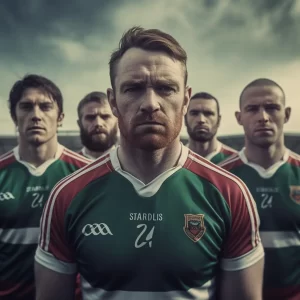
Gaelic Football
Gaelic football is a unique sport that combines elements of soccer, rugby, and basketball. It is played with a round ball and 15 players on each team. The aim of the game is to score points by kicking or punching the ball over the opposing team’s crossbar or into their goal.
Gaelic football is played at both amateur and professional levels, with the All-Ireland Senior Football Championship being the most prestigious competition in the country.
Hurling
Hurling is one of the oldest and fastest field games in the world, with a history dating back over 3,000 years. It is played with a small ball and a curved wooden stick called a hurley.
The aim of the game is to score points by hitting the ball over the opposing team’s crossbar or into their goal. Hurling is a physically demanding sport that requires a high level of skill, speed, and agility.

Camogie
Camogie is the female equivalent of hurling, played with similar rules and equipment. It is a fast-paced and highly competitive sport that has been growing in popularity in recent years.
The All-Ireland Senior Camogie Championship is the most prestigious competition in the sport.
Rugby
Rugby is a popular sport in Ireland, with both the national team and the provincial teams enjoying a strong following. The sport is played with an oval ball and 15 players on each team.
The aim of the game is to score points by carrying the ball over the opposing team’s goal line or kicking it through their goalposts. Rugby is known for its physicality and requires a high level of fitness and skill.
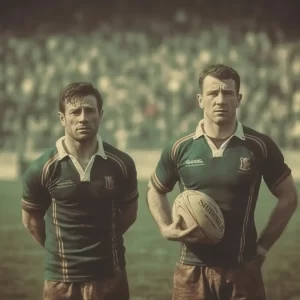
Soccer
Soccer, or football as it is known in Ireland, is also widely played and enjoyed in the country. The national team has had some success in international competitions, including qualifying for the World Cup on three occasions. The domestic league, the League of Ireland, has also been growing in popularity in recent years.
Irish Traditions: Music and Dance

Irish Traditional Irish Music
Traditional Irish music has been a part of Irish culture and Irish traditions for centuries. The Irish harp was the only instrument played for a long time, but other instruments such as the fiddle, tin whistle, and accordion were added later.
Irish music is known for its lively and upbeat tunes that are often played at festivals and events. Musicians who play traditional Irish music are highly respected and often play in groups or sessions.
The fiddle is one of the most popular instruments used in traditional Irish music. It is a stringed instrument that is played with a bow and is known for its distinctive sound.
The tin whistle is another popular instrument that is often used in Irish music. It is a small, simple instrument that is easy to play and is often used to play melodies.
Irish Dancing
Irish dancing has been around for centuries and is an important part of Irish culture and Irish traditions. There are several different styles of Irish dancing, including step dancing, jig dance, sean nós dancing, céilí dance, and Irish tap dancing. Irish dancing is often performed in groups and is characterized by fast footwork and intricate choreography.
Step dancing is one of the most popular styles of Irish dancing and is often performed in competitions. It is characterized by fast, intricate footwork and is often performed solo. Jig dance is another popular style of Irish dancing that is characterized by fast, upbeat music and lively footwork.
Sean nós dancing is a traditional style of Irish dancing that is characterized by a relaxed, improvisational style. It is often performed solo and is known for its intricate footwork. Céilí dance is a social style of Irish dancing that is often performed in groups. It is characterized by lively music and simple, repetitive steps.
Irish tap dancing is a style of Irish dancing that is similar to American tap dancing. It is characterized by fast, rhythmic footwork and is often performed by professionals. Irish dancing is an important part of Irish culture and is often performed at festivals and events around the world.
Irish Literature and Storytelling
Irish literature and storytelling have a long and rich history that dates back centuries and is a great way of passing Irish traditions down to future generations. The Irish people have always had a deep love for words and storytelling, and this tradition has been passed down through generations.

Celtic Legends
Celtic legends are an integral part of Irish storytelling. These legends are filled with mythical creatures, heroes, and gods, and they have been passed down orally from generation to generation. Some of the most famous Celtic legends include the legend of Cú Chulainn, the Táin Bó Cúailnge, and the Children of Lir.
The legend of Cú Chulainn tells the story of a warrior who was known for his incredible strength and skill in battle. The Táin Bó Cúailnge is an epic tale of a war between two Irish kingdoms over a prized bull. The Children of Lir is a tragic tale of four siblings who were turned into swans by their jealous stepmother.
Famous Irish Authors
Ireland has produced some of the most celebrated writers in the world, including W.B. Yeats, James Joyce, Oscar Wilde, Bernard Shaw, and Samuel Beckett.
W.B. Yeats is considered one of the greatest poets of the 20th century. His work often drew upon Irish mythology and folklore, and he was a key figure in the Irish literary revival.
James Joyce is best known for his novel Ulysses, which is considered one of the greatest works of modernist literature. His writing often explored themes of Irish identity and the human condition.
Oscar Wilde is known for his wit and his plays, including The Importance of Being Earnest and Lady Windermere’s Fan. He was also an accomplished novelist and poet.
Bernard Shaw was a playwright and critic who won the Nobel Prize in Literature in 1925. His work often tackled social and political issues, and he was a vocal advocate for women’s rights and socialism.
Samuel Beckett is best known for his play Waiting for Godot, which is considered a masterpiece of the Theatre of the Absurd. His work often explored themes of existentialism and the human condition.
Irish literature and storytelling have had a profound impact on the world of literature. The tradition of storytelling continues to thrive in Ireland, and the country’s rich literary history is celebrated around the world.
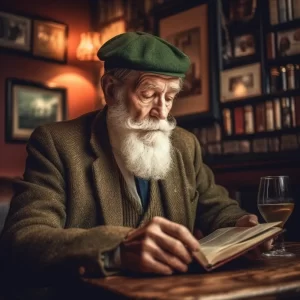
Irish Food Traditions
Irish cuisine has a long and rich history, with many traditional dishes that remain popular today. From hearty stews to potato dishes and fresh seafood, Irish food is known for its simplicity and use of fresh, local ingredients.
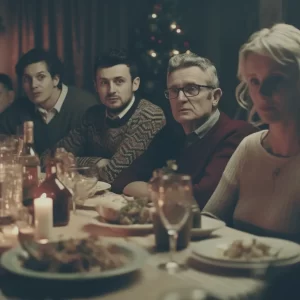
Traditional Irish Cuisine
Irish stew is perhaps the most well-known dish of traditional Irish cuisine. Made with cheap ingredients such as lamb or beef, potatoes, onions, and carrots, it is a staple of Irish home cooking. Another popular potato dish is colcannon, which is mashed potatoes mixed with kale or cabbage and butter.
Fresh seafood is also a big part of Irish cuisine, particularly in the West of Ireland. Galway oysters are a particular delicacy, known for their sweet, briny flavor.
In addition to these dishes, there are many other traditional Irish foods to try. Boxty, a type of potato pancake, is a popular breakfast dish, while soda bread is a staple of Irish baking. Black pudding, made from pig’s blood and oatmeal, is a traditional breakfast food, while bangers and mash, a dish of sausages and mashed potatoes, is a popular dinner option.
Pub Culture
Irish traditions often revolve around the pub and pubs are an important part of Irish culture, and many serve traditional Irish food alongside their drinks, resulting in many Irish drinking traditions. Guinness, a dark, rich beer, is one of the most famous Irish drinks and is often enjoyed in pubs across the country.
Whiskey is another popular Irish drink, with many distilleries located throughout the country. Irish coffee, made with whiskey, coffee, and cream, is a popular after-dinner drink. Ireland’s famous bootleg drink is known as Poitin, and was illegally brewed for many centuries, not dissimilar to American bootleggers.
Many Irish restaurants also serve traditional Irish food, often with a modern twist. Beef and dairy products are also important parts of Irish cuisine, with Irish beef and milk renowned for their quality.

Pub Culture and Irish Drink Traditions
Ireland is famous for its pub culture, which is deeply rooted in Irish society. Pubs are not just places to drink, but also a social hub where people gather to share stories, music, and laughter.
The pub is an important part of the Irish way of life, and it is where many of Ireland’s traditions and customs are kept alive.
The Irish pub is a unique experience, and it is not just about the drinks. It is about the atmosphere, the people, and the sense of community. Irish pubs are known for their warm and welcoming nature, where strangers are treated like old friends.
It is not uncommon for locals to strike up a conversation with visitors, sharing their knowledge of the area and their favorite Irish traditions.
Irish drink traditions are also an important part of pub culture. Guinness is the most famous Irish drink, and it is a staple in many Irish pubs.
However, there are many other Irish drinks that are equally popular, such as whiskey, cider, and mead. Irish whiskey is a particular favorite, and it is often enjoyed straight or with a splash of water.
In addition to the drinks, Irish pubs are also known for their traditional Irish music sessions. These sessions are a celebration of Irish culture and heritage, and they are a popular attraction for visitors. Musicians gather in the pub to play traditional Irish music, and everyone is welcome to join in the fun.
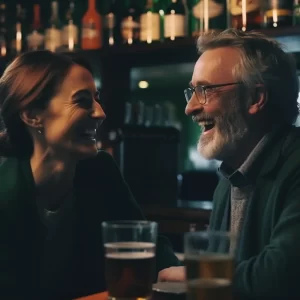
Irish Beliefs and Customs
Celtic Pagan Festivals
Irish culture has a deep history of Celtic Paganism, which has reflected in many Irish traditions and the country’s customs. Many of these traditions are tied to the cycles of nature and the changing of the seasons. Celtic Pagan festivals such as Imbolc, Beltane, Lughnasadh, and Samhain are still celebrated in Ireland today, often with a modern twist. For instance, Samhain, which is the precursor to Halloween, is celebrated with bonfires, costumes, and parties.
Catholic Traditions
Ireland was also a deeply religious country, with Catholicism being the dominant religion. Many Irish customs and traditions are tied to the Catholic Church, such as the use of the shamrock to represent the Holy Trinity. Other customs include wakes, which are held after someone passes away, and the practice of thanking the bus driver when getting off a bus. An Irish wake is one of the strongest Irish traditions that almost everyone abides by.
Irish Sayings and Slang
Irish culture is known for its colorful language and sayings. The Irish have a unique way of expressing themselves, often through the use of slang and colloquialisms. For instance, “craic” is a term used to describe a good time or fun, while “slagging” (playful teasing) is one of our favorite Irish traditions. Other common sayings include “rushes” for a sense of urgency and “fairy tree” for a tree that is believed to be inhabited by fairies.
Ireland is also famous for its proverbs and Irish blessings.

Ireland’s Patron Saints
Ireland has a long history of Christianity, and many saints have been associated with the country. Two of the most well-known patron saints of Ireland are Saint Patrick and Saint Brigid.
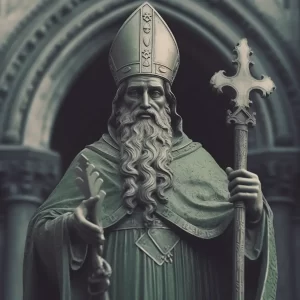
Saint Patrick
Saint Patrick is the patron saint of Ireland, and his feast day is celebrated on March 17th. He is credited with bringing Christianity to Ireland in the 5th century. According to legend, he used the shamrock to explain the concept of the Holy Trinity to the Irish people.
Saint Patrick’s Day is a national holiday in Ireland and is celebrated with parades, festivals, and other events. It is also celebrated in many other parts of the world, particularly in countries with large Irish populations.
Other Irish Saints
There are many other saints associated with Ireland, some of whom are recognized by the Catholic Church and others who are not. Some of the most well-known Irish saints include:
- Saint Brigid: the patron saint of Ireland along with Saint Patrick. She was known for her piety and generosity and founded a monastery in Kildare.
- Saint Columba: a monk who founded several monasteries in Ireland and Scotland.
- Saint Kevin: an abbot who founded a monastery in Glendalough.
- Saint Colmcille: a monk who is credited with spreading Christianity to Scotland and founding several monasteries there.
These saints, along with many others, played an important role in the history and culture of Ireland. Their legacy is still celebrated today through festivals, traditions, and religious observances.
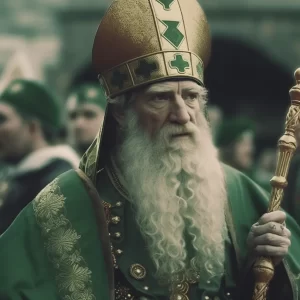
Irish Traditions for Christmas
Ireland has a rich collection of Irish traditions at Christmas time that have been passed down through generations. From religious observances to festive customs, the Irish celebrate the holiday season in their own unique way. Here are a few of the most beloved Irish traditions for Christmas:
December 8th
On December 8th, the Feast of the Immaculate Conception, the Irish traditionally decorate their homes for Christmas. It is believed that if the decorations are not up by this date, bad luck will follow. The day is also a holy day of obligation for Catholics in Ireland.
Christmas Eve
In Ireland, Christmas Eve is a time for Irish family traditions and festive activities. Many families attend midnight Mass, where they sing carols and celebrate the birth of Jesus. It is also traditional to leave out mince pies and a glass of Guinness for Santa Claus.
Christmas Day
On Christmas Day, families gather together to exchange gifts and enjoy a large feast. The meal typically includes turkey, ham, stuffing, and potatoes. Christmas pudding, a rich, fruity dessert, is also a staple of the Irish Christmas dinner.
St. Stephen’s Day
St. Stephen’s Day, also known as Boxing Day, is a national holiday in Ireland. It is traditional to go for a walk, attend a horse race, or participate in a charity event on this day. The Wren Boys, a group of young men dressed in costumes, also perform traditional music and dance in the streets.
Other Irish traditions
Other Irish Christmas traditions include:
- Lighting a candle in the window as a sign of welcome
- Playing Christmas music, especially the beloved song “Fairytale of New York”
- Drinking hot whiskey or mulled wine to warm up on cold winter nights
- Participating in the Christmas Day swim, where brave souls take a dip in the icy waters of the Irish Sea.
Irish Family Traditions
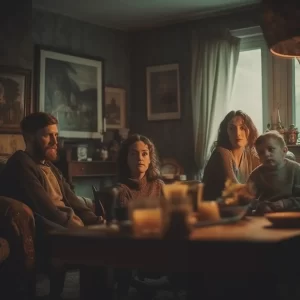
Irish family traditions have been an essential part of the country’s culture for centuries. Family is considered the cornerstone of Irish society, and the Irish people have always placed great importance on maintaining close relationships with their families.
One of the most significant Irish family traditions is the concept of the extended family. In Ireland, families often include grandparents, aunts, uncles, and cousins, who all play an important role in the lives of their younger family members. This tradition has helped to create a strong sense of community and support within Irish families.
Another important aspect of Irish family traditions is the emphasis on hospitality. Irish families are known for their warm welcome and generosity towards guests, whether they are family members or strangers. This tradition is deeply ingrained in Irish culture and has been passed down from generation to generation.
Irish families also have a strong tradition of storytelling. Many families have passed down stories and legends from their ancestors, which have been preserved and shared over the years. This tradition has helped to keep Irish history and culture alive and has also provided a way for families to bond and connect with each other.
Finally, Irish families have a long-standing tradition of celebrating special occasions together, such as weddings, christenings, and birthdays. These events are often marked by traditional Irish music, dancing, and food, and provide an opportunity for families to come together and celebrate their shared heritage and traditions.
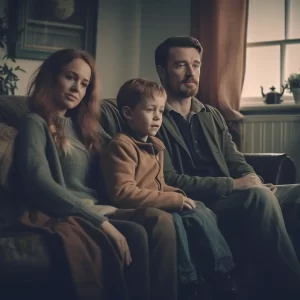
Irish Language
The Irish language, also known as Gaeilge or Gaelic, is a member of the Goidelic group of Celtic languages. It is the first official language of the Republic of Ireland and has been recognized as an official language of the European Union since 2007.
The traditional Irish alphabet, known as áibítir, consists of 18 letters and does not contain letters such as j, k, q, v, w, x, y, or z. However, some of these letters are used in modern loanwords. V is used in a small number of native words and colloquialisms.
The history of the Irish language dates back to the 4th century when it was first written in the Ogham alphabet. The language has undergone many changes over the years, with the most significant being the introduction of the Latin alphabet by Christian monks in the 6th century.
Today, the Irish language is taught in schools throughout Ireland, and there are many resources available for those who wish to learn the language. The Irish government has also made efforts to promote the language, including the establishment of the Irish language television station, TG4.
Despite these efforts, the Irish language is still considered endangered, with only a small percentage of the population using it as their primary language. However, there is a growing interest in the language, and many Irish people are proud of their cultural heritage and the unique linguistic identity that the Irish language provides.
The version of English spoken in Ireland is known as Hiberno-English. This results in some speech appearing strange to other native English speakers. For example, Irish people might say “I do be” instead of “I am”. This is due to how the Gaelic language is spoken and how it carried over to English in modern day Ireland.
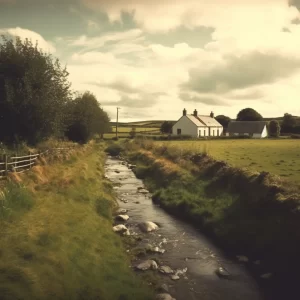
Visiting Ireland
Ireland is a popular destination for visitors from all over the world. The country is known for its rich history, stunning landscapes, and friendly people. If you are planning a trip to Ireland, there are a few things you should keep in mind to make the most of your visit.
Dublin
Dublin is the capital of Ireland and is a must-visit destination for anyone traveling to the country. The city is known for its vibrant nightlife, historical landmarks, and friendly locals. Visitors can explore the city’s many museums, galleries, and theaters, or simply wander the streets and take in the sights and sounds of this bustling city.
Hospitality
Irish hospitality is world-renowned, and visitors to the country can expect a warm welcome wherever they go. From cozy pubs to five-star hotels, the Irish take pride in making their guests feel at home. Visitors should take advantage of this hospitality and engage with the locals to learn more about the country’s culture and traditions.
Exploring the Countryside
While Dublin is a popular destination, visitors should also take the time to explore the Irish countryside. From the rugged coastline to the rolling hills, the country’s natural beauty is truly breathtaking. Visitors can take a leisurely drive along the Wild Atlantic Way, hike through the Wicklow Mountains, or explore the many quaint villages and towns that dot the countryside.
Visiting Ireland is a unique and unforgettable experience. Whether you are exploring the bustling streets of Dublin or taking in the stunning natural beauty of the countryside, the country has something to offer everyone. With its friendly locals and rich history, Ireland is a must-visit destination for anyone looking to experience the best of what Europe has to offer.
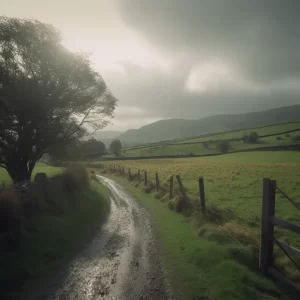
Frequently Asked Questions
What are some traditional Irish foods?
Ireland is known for its hearty and comforting cuisine. Some traditional Irish foods include:
- Irish Stew: a hearty stew made with lamb or mutton, potatoes, carrots, and onions.
- Soda Bread: a type of bread made with baking soda instead of yeast, often served with butter and jam.
- Boxty: a type of potato pancake made with grated potatoes, flour, and milk.
- Colcannon: mashed potatoes mixed with kale or cabbage and sometimes bacon or sausage.
What are some ancient Irish traditions still celebrated today?
Ireland has a rich history and many ancient traditions are still celebrated today. Some of these traditions include:
- Imbolc: an ancient Celtic festival celebrating the beginning of spring.
- Beltane: a fire festival celebrating the start of summer.
- Samhain: a festival marking the end of the harvest season and the beginning of winter.
- Lughnasadh: a festival celebrating the first harvest of the year.
What are some unique family related Irish traditions in Ireland?
Family is important in Irish culture, and many families have their own unique traditions. Some of these traditions include:
- Sunday dinner: many families gather together every Sunday for a big family dinner.
- Storytelling: Ireland has a rich tradition of storytelling, and many families pass down stories from generation to generation.
- Pub culture: going to the pub with family and friends is a common tradition in Ireland, and many families have a favorite pub that they frequent.
What are some special holidays and Irish traditions celebrated in Ireland?
Ireland has many holidays and traditions that are unique to the country. Some of these include:
- St. Patrick’s Day: a national holiday celebrating the patron saint of Ireland.
- Bloomsday: a celebration of the life and work of Irish writer James Joyce.
- Wren Day: a tradition where people dress up in costumes and go from house to house singing and dancing.
- All-Ireland Finals Day: a day when the finals of the Gaelic Athletic Association’s football and hurling championships are held.
Check out more below:

